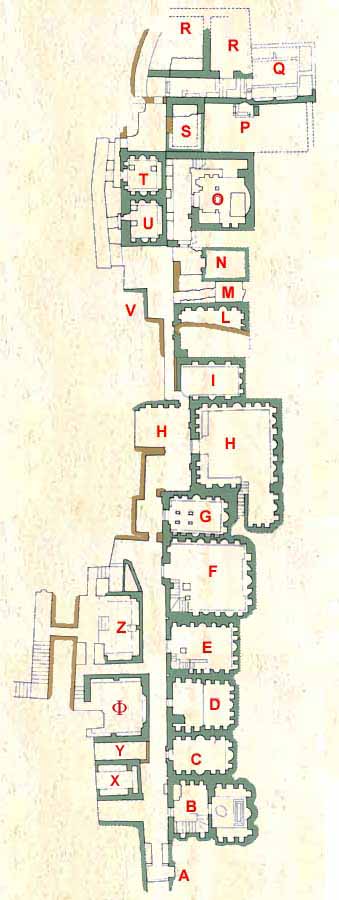|
(Click
on the areas for more detail, a list
is given at the bottom of this page)
South
of St Peter's Basilica, on the ground is a marker
designating the place where the obelisk once stood
in the circus of Nero. Today this same obelisk is
in the middle of St Peter's Square.
Here,
in fact, iuxta obeliscum, Saint Peter was crucified
upside down, as ancient tradition testifies, and buried
in a simple rock tomb in the necropolis that extended
a little north alont the via Cornelia. Just to the
right of the Sacristy under another archway is the
entrance to the Scavi, or excavations, of the basilica
leading to the remains of the via Cornelia; from there
one can approach the place where Saint Peter was buried.
With
the construction of the Constantinian basilica the
tomb and the surrounding necropolis disappeared from
sight and eventually from consciousness. However,
both the Constantinian and the present basilica were
built in such a way that the papal altar is situated
directly over the original tomb, making it the axis
for the two massive basilicas that eventually arose
over the modest original tomb of Peter.
It
is due in great part to Pope Pius XII that the original
tomb was discovered and the necropolis excavated during
1940-57. The most important part of the necropolis
is the area that contained the body of Peter, called
Field P (the archaeologist identified the areas of
excavation with letters). It lies in the western section
containing many other burial sites from the first
and second centuries alongside that of the apostle.
Saint
Peter and The Vatican: The Legacy of the Popes. Art
Services International, 2003
|

